Benlei Cui
Erase Diffusion: Empowering Object Removal Through Calibrating Diffusion Pathways
Mar 10, 2025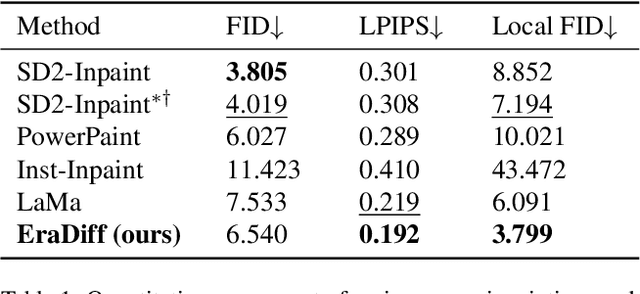
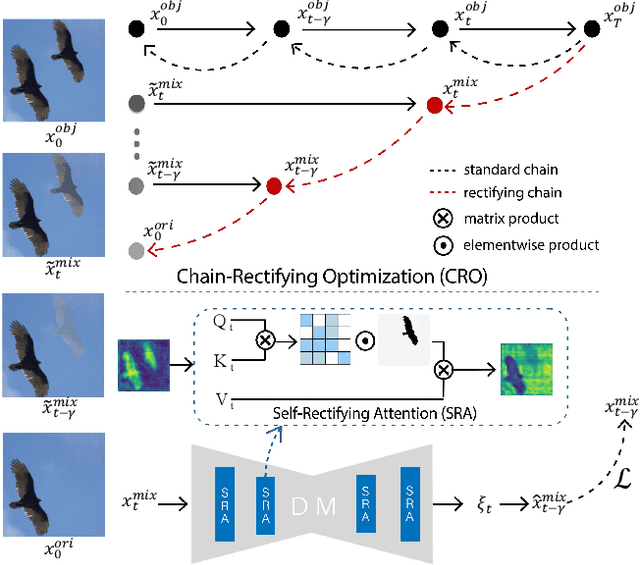

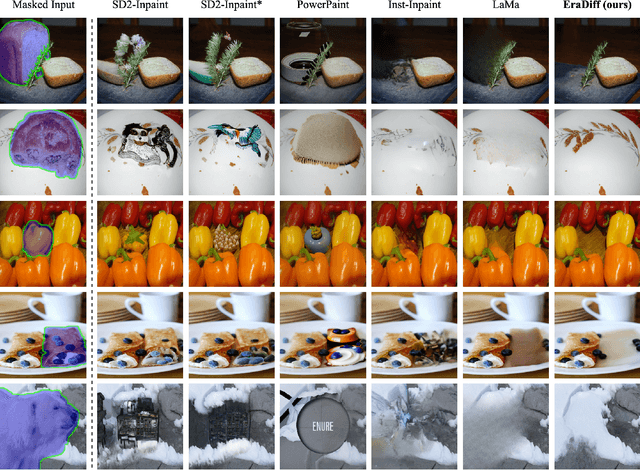
Abstract:Erase inpainting, or object removal, aims to precisely remove target objects within masked regions while preserving the overall consistency of the surrounding content. Despite diffusion-based methods have made significant strides in the field of image inpainting, challenges remain regarding the emergence of unexpected objects or artifacts. We assert that the inexact diffusion pathways established by existing standard optimization paradigms constrain the efficacy of object removal. To tackle these challenges, we propose a novel Erase Diffusion, termed EraDiff, aimed at unleashing the potential power of standard diffusion in the context of object removal. In contrast to standard diffusion, the EraDiff adapts both the optimization paradigm and the network to improve the coherence and elimination of the erasure results. We first introduce a Chain-Rectifying Optimization (CRO) paradigm, a sophisticated diffusion process specifically designed to align with the objectives of erasure. This paradigm establishes innovative diffusion transition pathways that simulate the gradual elimination of objects during optimization, allowing the model to accurately capture the intent of object removal. Furthermore, to mitigate deviations caused by artifacts during the sampling pathways, we develop a simple yet effective Self-Rectifying Attention (SRA) mechanism. The SRA calibrates the sampling pathways by altering self-attention activation, allowing the model to effectively bypass artifacts while further enhancing the coherence of the generated content. With this design, our proposed EraDiff achieves state-of-the-art performance on the OpenImages V5 dataset and demonstrates significant superiority in real-world scenarios.
Attentive Eraser: Unleashing Diffusion Model's Object Removal Potential via Self-Attention Redirection Guidance
Dec 17, 2024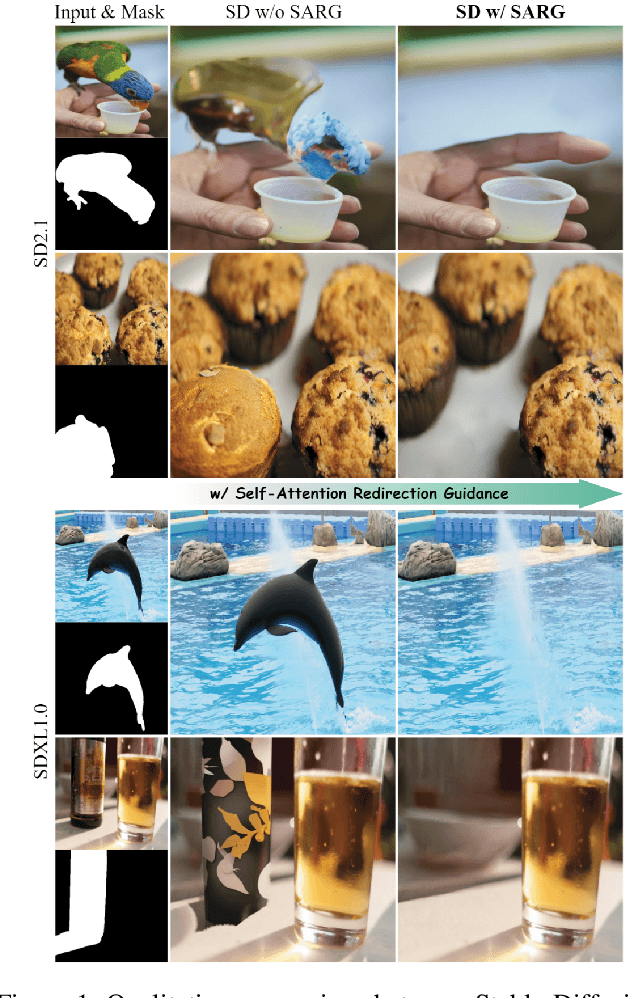

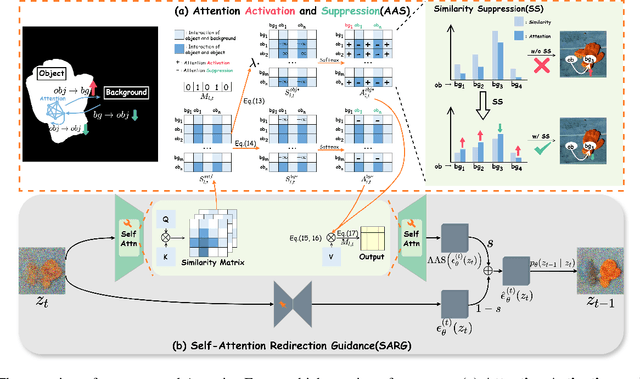
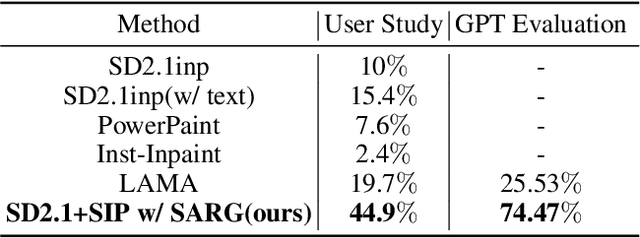
Abstract:Recently, diffusion models have emerged as promising newcomers in the field of generative models, shining brightly in image generation. However, when employed for object removal tasks, they still encounter issues such as generating random artifacts and the incapacity to repaint foreground object areas with appropriate content after removal. To tackle these problems, we propose Attentive Eraser, a tuning-free method to empower pre-trained diffusion models for stable and effective object removal. Firstly, in light of the observation that the self-attention maps influence the structure and shape details of the generated images, we propose Attention Activation and Suppression (ASS), which re-engineers the self-attention mechanism within the pre-trained diffusion models based on the given mask, thereby prioritizing the background over the foreground object during the reverse generation process. Moreover, we introduce Self-Attention Redirection Guidance (SARG), which utilizes the self-attention redirected by ASS to guide the generation process, effectively removing foreground objects within the mask while simultaneously generating content that is both plausible and coherent. Experiments demonstrate the stability and effectiveness of Attentive Eraser in object removal across a variety of pre-trained diffusion models, outperforming even training-based methods. Furthermore, Attentive Eraser can be implemented in various diffusion model architectures and checkpoints, enabling excellent scalability. Code is available at https://github.com/Anonym0u3/AttentiveEraser.
LiteDepthwiseNet: An Extreme Lightweight Network for Hyperspectral Image Classification
Oct 15, 2020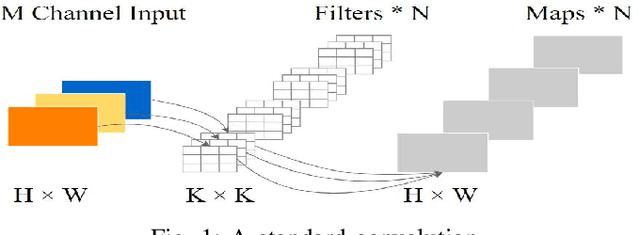
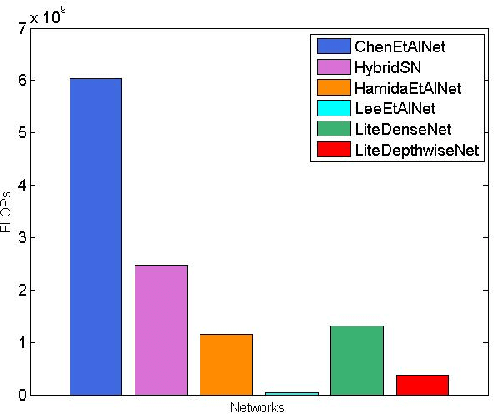
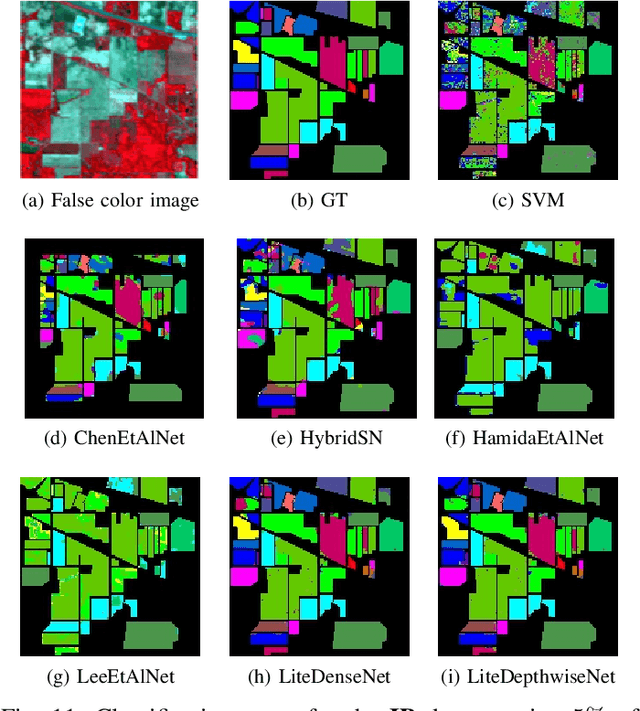
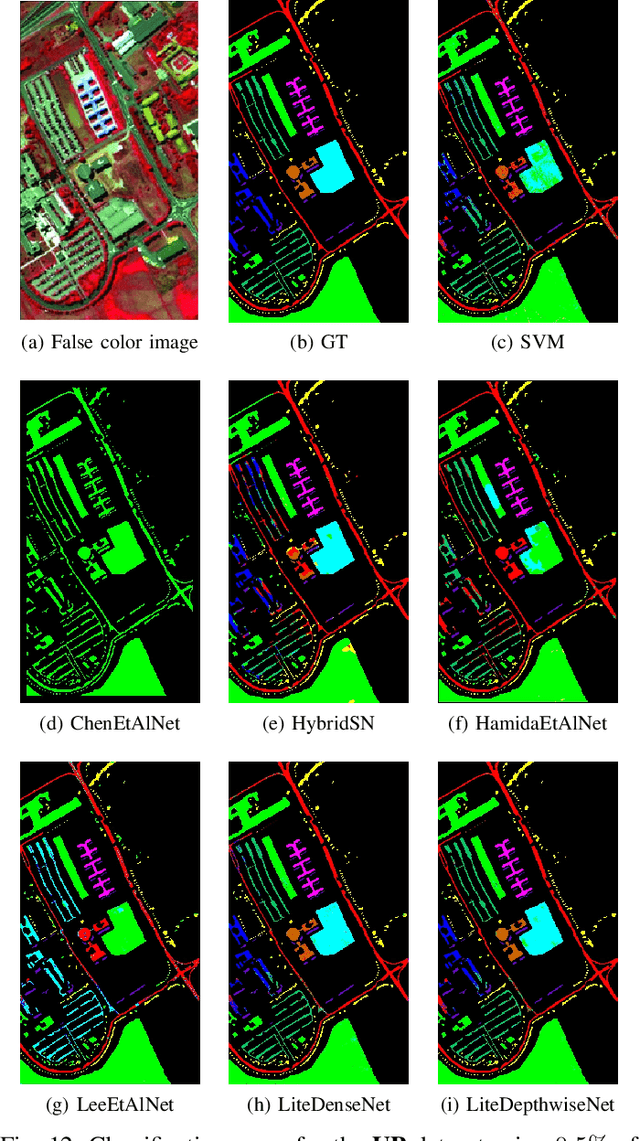
Abstract:Deep learning methods have shown considerable potential for hyperspectral image (HSI) classification, which can achieve high accuracy compared with traditional methods. However, they often need a large number of training samples and have a lot of parameters and high computational overhead. To solve these problems, this paper proposes a new network architecture, LiteDepthwiseNet, for HSI classification. Based on 3D depthwise convolution, LiteDepthwiseNet can decompose standard convolution into depthwise convolution and pointwise convolution, which can achieve high classification performance with minimal parameters. Moreover, we remove the ReLU layer and Batch Normalization layer in the original 3D depthwise convolution, which significantly improves the overfitting phenomenon of the model on small sized datasets. In addition, focal loss is used as the loss function to improve the model's attention on difficult samples and unbalanced data, and its training performance is significantly better than that of cross-entropy loss or balanced cross-entropy loss. Experiment results on three benchmark hyperspectral datasets show that LiteDepthwiseNet achieves state-of-the-art performance with a very small number of parameters and low computational cost.
 Add to Chrome
Add to Chrome Add to Firefox
Add to Firefox Add to Edge
Add to Edge